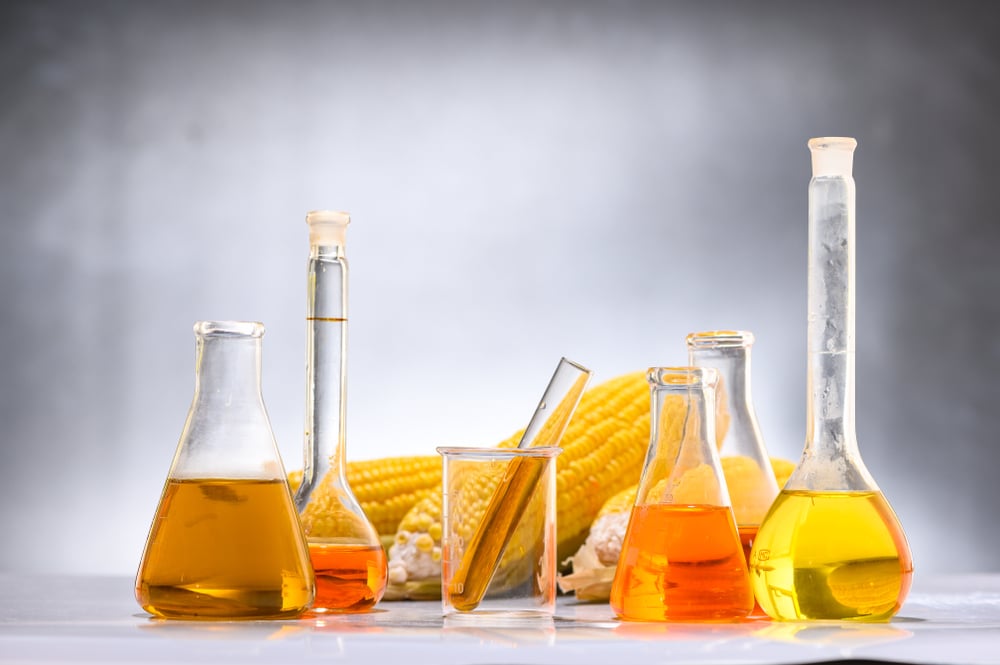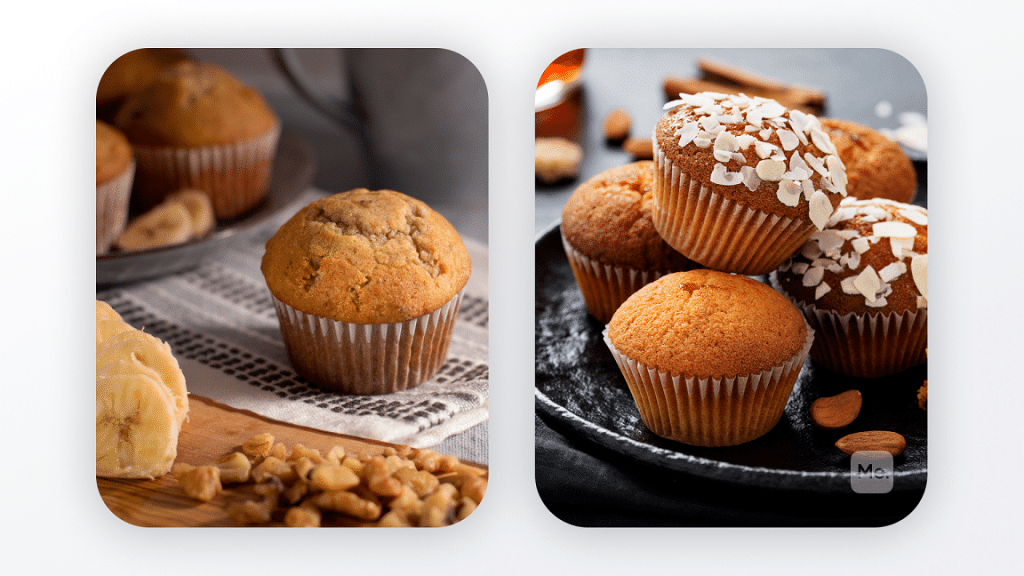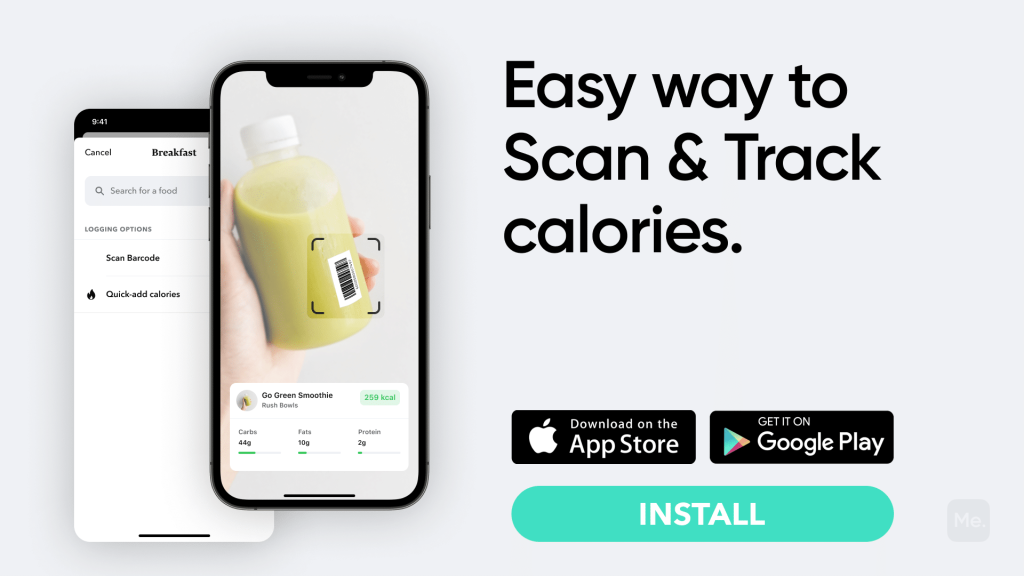From preservatives to flavor enhancers, there are many ingredients in our food that we don’t necessarily know about if we don’t read labels carefully. One of these ingredients is propylene glycol. Found in a variety of foods, including baked goods, ice cream, and salad dressing, propylene glycol is a food additive that has been deemed safe by the Food and Drug Administration (FDA) (9). While propylene glycol is considered safe, there are some concerns about its potential health effects. This article will take a closer look at propylene glycol in food, what it is, and what research says about its safety.
What Is Propylene Glycol?
If you’ve noticed that the cake you baked from a store-bought mix had an extra moist texture, it’s probably because the mix contained a form of propylene glycol. This ingredient is also added to salad dressings to help keep the spices evenly dispersed and to prevent oil separation.
Propylene glycol is a compound that belongs to a group of chemicals known as alcohols. It’s a clear, colorless, and odorless liquid that is water-soluble and has a sweet taste (1).
Propylene glycol is used as a food additive because it can help keep food moist, prevent spoilage, and enhance flavor. It’s also used in cosmetics and pharmaceuticals (15).
Many are alarmed by this ingredient because it’s confused with ethylene glycol, which is found in antifreeze and is considered poisonous (6). However, propylene glycol is much less toxic than ethylene glycol and is used in a variety of products, including food.
Other names for propylene glycol are 1,2-propanediol, 1,2-dihydroxy propane, Methyl ethyl glycol, and Trimethyl glycol (15).
On ingredient lists, it may be listed under Propylene glycol, Propylene glycol mono and diester, E1520 or 1520.
Read More: The Banting Diet: History, How It Works, And Everything Else You Should Know
Propylene Glycol Uses
In food applications, propylene glycol is often used as (16) (19):
- An anti-caking agent – to keep powdered ingredients from clumping together
- An emulsifier – to help mix ingredients that don’t normally mix well, such as oil and water
- An antioxidant – to prevent fats and oils from going rancid
- A preservative – to help prevent bread and cake from going stale
- A dough strengthener – to help prevent the bread from becoming crumbly
- A flavor enhancer – to amplify or “carry” flavors
- A humectant – to keep food moist (this is why it’s often added to cakes and other baked goods)
- A stabilizer – to help prevent ice crystals from forming in ice cream
Propylene glycol is also used in:
- Cosmetics – to help keep products moist and to act as a solvent for other ingredients
- Pharmaceuticals – as a vehicle for oral, topical, and injectable medications; as an antifreeze for intravenous solutions; and to help keep ear drops from drying out
- Toothpaste – as a humectant
- Deodorants – to help prevent sweating
- Printing inks
- Dyes
- Paints
Which Foods Contain Propylene Glycol?
Many foods contain this ingredient. While the propylene glycol food list below isn’t comprehensive, it contains most of the common foods that contain this ingredient.
- Baked goods, including cake mixes, muffins, quick bread, and cookies
- Canned fruits, vegetables, soups, and stews
- Condiments, such as ketchup, salad dressing, mayonnaise, and BBQ sauce
- Dairy products, such as ice cream, frozen yogurt, and non-dairy creamer
- Packaged meals, such as macaroni and cheese, pizza, and ramen noodles
- Drinks, including beer, wine, and soda
- Dried fruits
- Jams and jellies
- Margarine
- Syrups
Betterme will keep you laser-focused on your weight loss journey! Nutrient-packed meal plans, fat-blasting workouts, galvanizing challenges and much more. Try using the app and see for yourself!
Is Propylene Glycol In Food Safe?
The FDA has categorized propylene glycol as “generally recognized as safe” (GRAS), which means that it’s safe for use in food (9). The European Union (EU) has also approved propylene glycol as a food additive (2).
While propylene glycol is considered safe, there are some concerns about its potential effects on health. These concerns stem from the fact that propylene glycol is metabolized into lactic acid, which is naturally produced in the body but can be harmful in high concentrations.
In one study, rats that were fed a diet containing very high amounts of propylene glycol for six weeks had increased levels of lactic acid in their blood, but it was not enough to cause harm (metabolic acidosis) (11).
Propylene glycol is also a skin irritant, and it’s possible that it could be harmful if inhaled (7). Inhaling large amounts of propylene glycol has been linked to lung damage in animals (8).
So, while propylene glycol is considered safe when used in food, there are some potential risks to be aware of. If you’re concerned about the safety of this ingredient, you may want to avoid foods that contain it.
What Are Some Side Effects Of Propylene Glycol?
There is a lot of conflicting information about the dangers of propylene glycol. Some people claim that it is perfectly safe, while others say that it can cause a variety of health problems.
Research shows that propylene glycol has very low toxicity (10). Poisoning rarely occurs from propylene glycol unless very large amounts are ingested, more often through medication than food.
Potential effects of ingesting very large amounts of propylene glycol include:
Dangers For People With Kidney Or Liver Disease
The kidney and liver work together to remove propylene glycol from the body. However, people with kidney or liver diseases may not be able to process propylene glycol as well, which can lead to a buildup of the chemical in their bodies. This can be dangerous and potentially lead to serious health problems (2) (18).
Dangers For Young Children And Pregnant Women
Both infants and pregnant women have low levels of the enzyme needed to break down propylene glycol. This means that they may be more likely to experience side effects from exposure to the chemical (13) (16).
Seizures are a potential side effect in young children, while pregnant women may experience reproductive toxicity (14).
Read More: Grocery List For Weight Loss: 15 Must-Have Items
Dangers For People With Allergies
People with allergies to propylene glycol may experience a variety of symptoms when they are exposed to this chemical (4). These can range from mild (such as skin irritation) to severe (such as difficulty breathing). In rare cases, anaphylactic shock may occur.
Risk Of Heart Attack
Very high doses of propylene glycol have been shown to cause heart attacks in animals. It rapidly decreases heart rate, causes low blood pressure, and can lead to cardiac arrest (3).
However, it’s important to note that these effects have only been seen in animals at very high doses. There is no evidence that propylene glycol poses a risk of heart attack in humans.
There is one reported case of a child suffering the loss of heart function while being treated for burns with a propylene glycol-based ointment (12).
The child received a very high dose of propylene glycol (the ointment was applied over a large area of the child’s body), and it is not clear if the propylene glycol or other factors contributed to the heart problems (12).
Neurological Effects
Large doses of propylene glycol can cause neurological effects, such as slurred speech, dizziness, and drowsiness (5).
Scientists observed that these symptoms disappear within 6 hours (17). It’s important to note that these symptoms were observed due to the ingredient in the medication, not food.
BetterMe app will kick you out of the mental funk, shake off your extra weight, rid you off your energy-zapping habits, and help you sculpt the body of your dreams. Intrigued? Hurry up and change your life for the better!
How To Avoid Propylene Glycol
While propylene glycol is present in many food items, there are some ways to avoid it if you’re concerned about your exposure.
- Check food labels carefully: Propylene glycol may be listed as an ingredient in food products, cosmetics, and medications.
- Avoid ultra processed foods: Many highly processed foods contain propylene glycol, so avoiding these can help reduce your exposure.
- Choose organic foods: Organically produced foods are less likely to contain propylene glycol than non-organic foods, especially if they are less processed.
- Eat whole foods: Whole foods are less likely to contain propylene glycol than processed foods.
- Talk to your doctor: If you’re concerned about your exposure to propylene glycol, talk to your doctor. They can help you make decisions about which products to avoid and how to best protect your health.
The Bottom Line
While propylene glycol is considered safe for most people, some groups may be more susceptible to the potential side effects of the chemical. If you fall into one of these groups, it is important to be aware of the risks and take steps to avoid excessive exposure to propylene glycol.
Get your personalized
meal plan!
DISCLAIMER:
This article is intended for general informational purposes only and does not serve to address individual circumstances. It is not a substitute for professional advice or help and should not be relied on for making any kind of decision-making. Any action taken as a direct or indirect result of the information in this article is entirely at your own risk and is your sole responsibility.
BetterMe, its content staff, and its medical advisors accept no responsibility for inaccuracies, errors, misstatements, inconsistencies, or omissions and specifically disclaim any liability, loss or risk, personal, professional or otherwise, which may be incurred as a consequence, directly or indirectly, of the use and/or application of any content.
You should always seek the advice of your physician or other qualified health provider with any questions you may have regarding a medical condition or your specific situation. Never disregard professional medical advice or delay seeking it because of BetterMe content. If you suspect or think you may have a medical emergency, call your doctor.
SOURCES:
- A review of the comparative mammalian toxicity of ethylene glycol and propylene glycol (1999, pubmed.ncbi.nlm.nih.gov)
- A toxicological review of the propylene glycols (2013, pubmed.ncbi.nlm.nih.gov)
- Autonomic reflexes and the cardiovascular effects of propylene glycol (1986, pubmed.ncbi.nlm.nih.gov)
- Clinical manifestations and impact on daily life of allergy to polyethylene glycol (PEG) in ten patients (2021, onlinelibrary.wiley.com)
- Ethylene Glycol and Propylene Glycol Toxicity (2020, atsdr.cdc.gov)
- Ethylene Glycol Toxicity – StatPearls – NCBI Bookshelf (2021, ncbi.nlm.nih.gov)
- Experimental exposure to propylene glycol mist in aviation emergency training: acute ocular and respiratory effects (2001, bmj.com)
- Exposure to electronic cigarette vapors affects pulmonary and systemic expression of circadian molecular clock genes (2017, onlinelibrary.wiley.com)
- Food Additive Status List (2021, fda.gov)
- Glycols, Propylene Glycols (2000, onlinelibrary.wiley.com)
- HEALTH EFFECTS – The Agency for Toxic Substances and Disease Registry (n.d., atsdr.cdc.gov)
- Hyperosmolality induced by propylene glycol. A complication of silver sulfadiazine therapy (1985, pubmed.ncbi.nlm.nih.gov)
- Low but inducible contribution of renal elimination to clearance of propylene glycol in preterm and term neonates (2014, pubmed.ncbi.nlm.nih.gov)
- Propylene glycol: increased incidence of seizures in low birth weight infants (1987, pubmed.ncbi.nlm.nih.gov)
- Propylene Glycol (2014, sciencedirect.com)
- Propylene Glycol Toxicity in Children – PMC (2014, ncbi.nlm.nih.gov)
- Reactions to peroral propylene glycol (1978, onlinelibrary.wiley.com)
- Recognition, Treatment, and Prevention of Propylene Glycol Toxicity – Zar – 2007 – Seminars in Dialysis (2007, onlinelibrary.wiley.com)
- Safety Assessment of Propylene Glycol, Tripropylene Glycol, and PPGs as Used in Cosmetics (2012, journals.sagepub.com)














